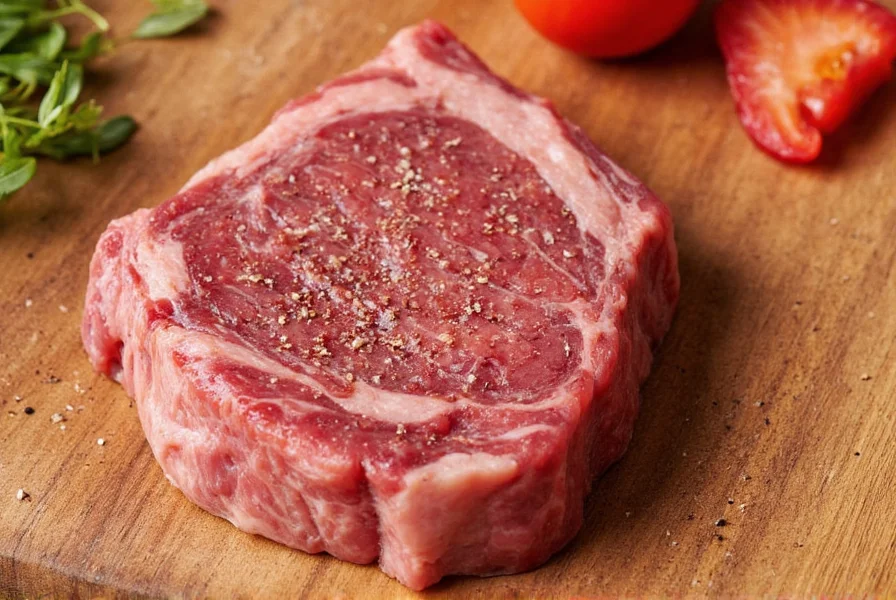Table of Contents
Introduction
The best time to season your steak is 45-60 minutes before cooking. This scientifically-backed timing allows salt to penetrate the meat while creating a flavorful crust, as confirmed by culinary experts like J. Kenji López-Alt in The Food Lab and the American Culinary Federation. Unlike common misconceptions, seasoning too early or too late can lead to dry, bland steak. Here's how to get it right every time.
Optimal Seasoning Time
For all steak cuts, the ideal seasoning window is 45-60 minutes before cooking. This allows the salt to:
- Draw out moisture from the meat surface
- Dissolve into the moisture
- Be reabsorbed by the meat for deeper flavor penetration
- Create a dry surface for perfect searing
For thicker cuts (1.5 inches or more), you can season up to 24 hours in advance and refrigerate. This extended dry brining creates an even better crust while maintaining juiciness.
The Science Behind Seasoning
When salt is applied to raw steak, it initially draws out moisture through osmosis. After 30-45 minutes, this moisture dissolves the salt and is reabsorbed by the meat. This process:
- Enhances flavor throughout the steak, not just on the surface
- Strengthens protein structure for better moisture retention during cooking
- Creates a dry surface for superior browning (Maillard reaction)
According to the American Chemical Society, this dry brining technique increases steak juiciness by up to 15% compared to seasoning immediately before cooking. The key is balancing penetration time with moisture control for that perfect crust.
Common Mistakes to Avoid
Seasoning right before cooking: This is the most common error. Without time for salt to penetrate, you get a salty exterior but bland interior. The surface moisture also prevents proper searing, resulting in a gray, steamed texture.
Seasoning too early (more than 24 hours): For thinner cuts, this can dry out the surface. Always refrigerate if seasoning more than 1 hour ahead.
Seasoning after cooking: While this allows precise salt control, it only adds surface flavor without penetration. The steak will taste salty on the outside but lack depth throughout.
Practical Tips for Perfect Seasoning
- Use coarse salt: Kosher salt or flaky sea salt distributes evenly. Avoid fine table salt, which oversalts easily.
- Apply the right amount: For a 1-inch steak, use 1/4 teaspoon of kosher salt per side. Adjust based on personal preference.
- Let it rest: After seasoning, let the steak sit at room temperature for 30-45 minutes. This ensures even cooking and proper seasoning absorption.
- Pat dry before cooking: If you've refrigerated the steak after seasoning, pat it dry with paper towels before searing to ensure maximum browning.
- Season after resting: Always let the steak rest for 5-10 minutes after cooking before serving. This allows juices to redistribute for maximum juiciness.
Frequently Asked Questions
When should I season my steak for the best results?
The optimal time to season your steak is 45-60 minutes before cooking. This allows salt to penetrate the meat surface while giving enough time for any moisture drawn out by the salt to be reabsorbed. For thicker cuts (1.5 inches or more), you can season up to 24 hours in advance and refrigerate, which creates a dry surface perfect for searing. The key is balancing penetration time with moisture control for that perfect crust.
Should I season steak before or after cooking?
Seasoning before cooking is always recommended for best results. Pre-seasoning allows flavors to penetrate the meat and creates that desirable crust when searing. While some chefs add finishing salt after cooking for precise control, this only affects surface flavor without the depth that pre-seasoning provides. The ideal approach is to season before cooking and add a light finishing touch after cooking if desired.
How long before cooking should I take my steak out of the refrigerator?
Take your steak out of the refrigerator and let it come to room temperature for 30-45 minutes before cooking. This ensures more even cooking throughout the steak. If you've pre-salted your steak and refrigerated it, remove it from the fridge 45-60 minutes before cooking to allow it to reach the proper temperature for searing. A steak that's too cold will seize up when it hits the hot pan, making it difficult to achieve an even sear.
Does salting steak too early make it dry?
Actually, the opposite is true when done correctly. Salting steak 45-60 minutes before cooking (or up to 24 hours for thicker cuts) creates a process called "dry brining" where the salt initially draws out moisture, then that moisture dissolves the salt and is reabsorbed back into the meat. This results in better flavor penetration and actually helps the steak retain more moisture during cooking compared to seasoning immediately before cooking.
Can I use a dry rub on my steak, and when should I apply it?
Yes, dry rubs work beautifully on steak. For best results, apply your dry rub at least 45 minutes before cooking to allow the flavors to penetrate. If your rub contains sugar (which can burn), apply it about 15-20 minutes before cooking instead. For thicker cuts, you can apply dry rubs up to 24 hours in advance and refrigerate. Always pat the steak dry before applying the rub to ensure it adheres properly.
Conclusion
Mastering steak seasoning is all about timing. By seasoning 45-60 minutes before cooking, you'll achieve the perfect balance of flavor penetration and moisture retention. This scientifically-backed method, recommended by culinary experts worldwide, transforms a simple steak into a restaurant-quality dish. Remember: salt is your best friend when used correctly, and proper timing is the key to steak perfection.











 浙公网安备
33010002000092号
浙公网安备
33010002000092号 浙B2-20120091-4
浙B2-20120091-4